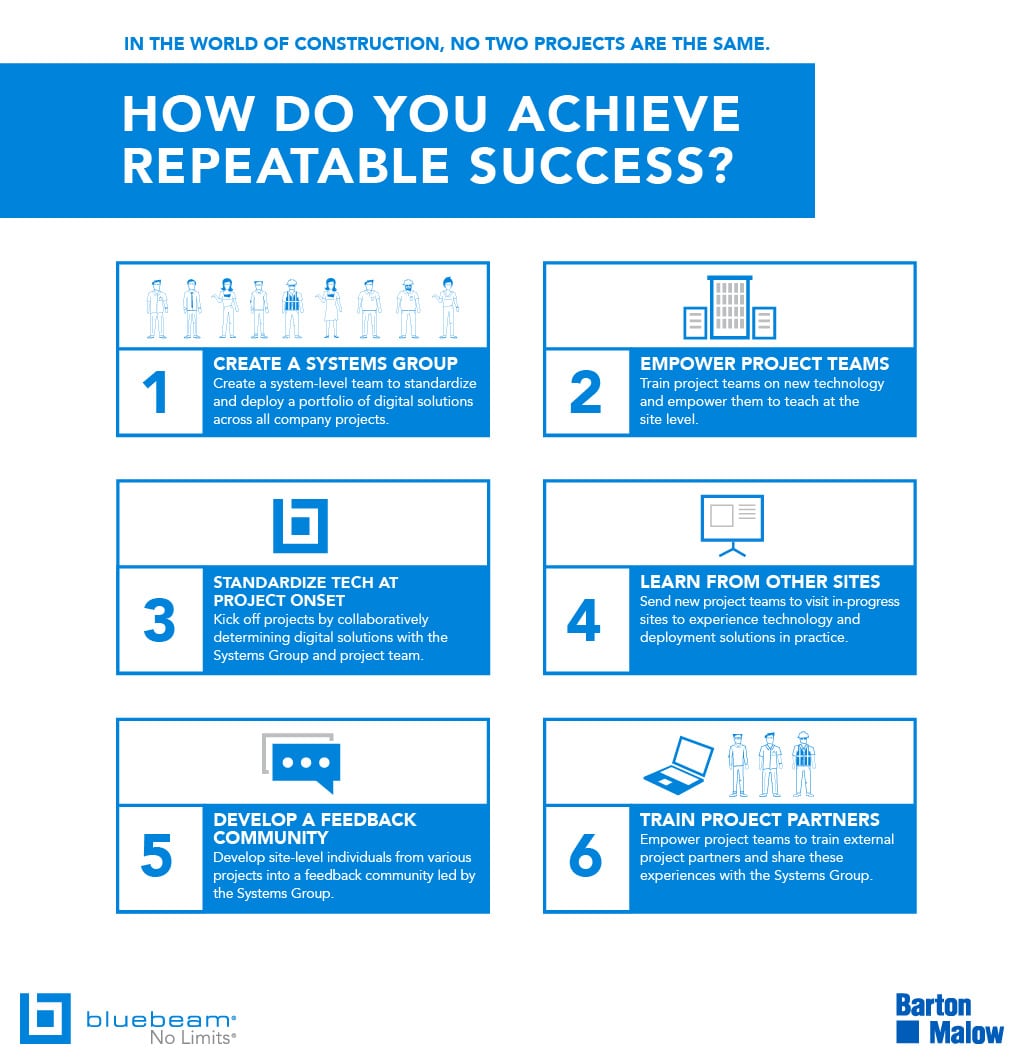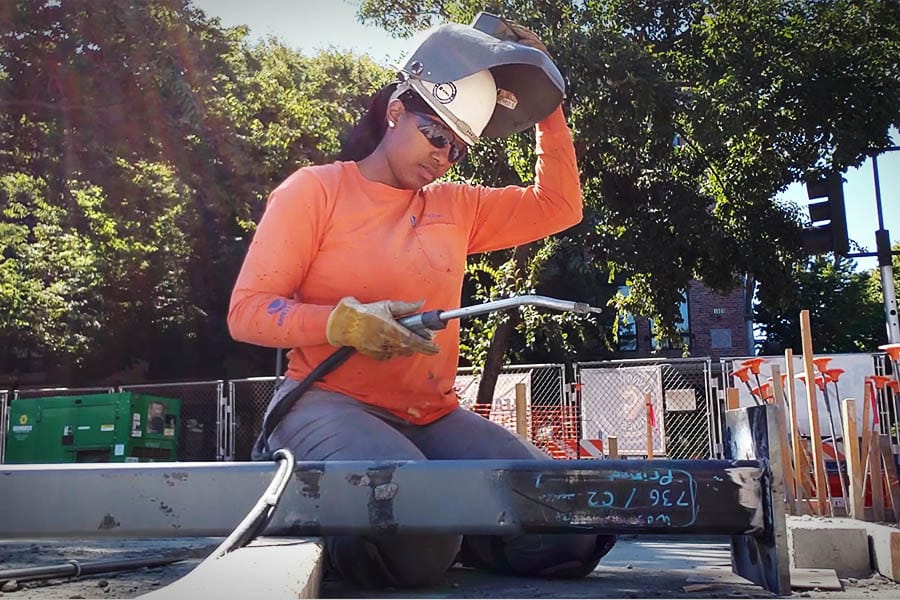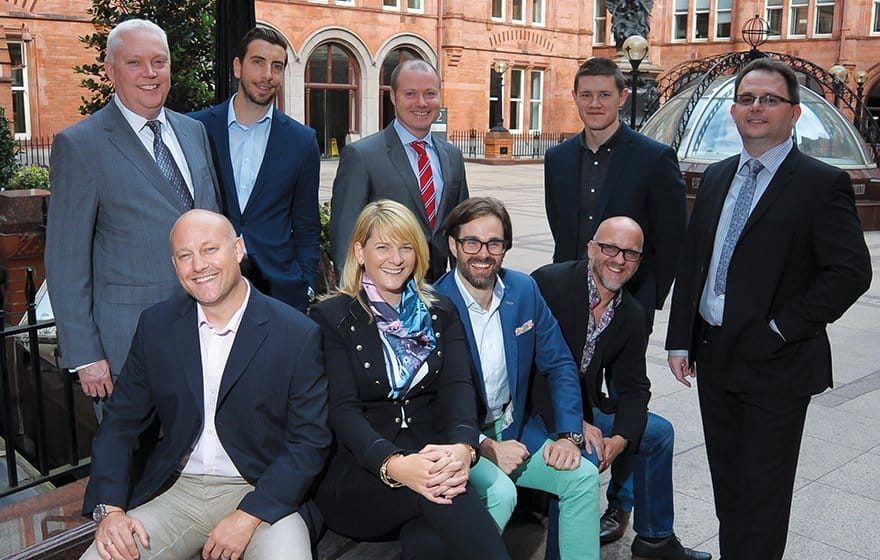We introduced technology and thought it would solve all of our problems,” says Barton Malow VDC Systems Director Lindsey Rem. Her declaration reflects the hopes of many companies within the rapidly growing construction industry. However, general contractors are coming to realize that exploring and implementing technology is complex, and evaluating its impact and standardizing these digital tools across jobsites is very challenging.“We introduced technology and thought it would solve all of our problems…”
In the world of construction, no singular jobsite or project team are the same, making it tough to standardize firm-wide systems. For companies chasing the elusive goal to achieve repeatable successes, this increases the need for a group of people to lead technology initiatives across the company (i.e. the system level) with buy-in from each individual project team.
Given the overwhelming success of Barton Malow’s recent $400 million DAYTONA Rising project, the company realized that its upcoming $400 million Notre Dame Campus Crossroads Project was the perfect opportunity to maintain momentum and evolve the recent successes of one project to the next, leveraging the expertise of the Barton Malow headquarters-based Systems Group.

The Implementation
The Systems Group is where success begins at Barton Malow. Led by Rem and VP of Systems Jon Woodsum, the team develops technology solutions with the intent of implementing enterprise-wide rollout in order to standardize processes across jobsites. The team compiles data from jobsites across the country, such as the DAYTONA Rising and Notre Dame Campus Crossroads projects, looking for similarities and pain points. Project teams about to begin planning for new projects are sent to other jobsites in progress so they can learn from the technology and deployment solutions in practice. And individuals in the field participate in feedback groups to help shape the enterprise-wide rollout strategy. Throughout the project lifecycle, the Systems Group provides training, advisement and support.“The Systems Group is instrumental in giving us the confidence to implement the digital tools that we have.”
“I can’t imagine not having an IT Systems Group that holds all of the successes and standards for a company, and allows those things to be implemented across the board on a consistent level,” says Notre Dame Campus Crossroads Senior Project Director Neal Morton. “The Systems Group is instrumental in giving us the confidence to implement the digital tools that we have, and make sure that it’s done seamlessly, because we have a big responsibility to interact with the owner and all of the subcontractors. We’ve gone so far as to develop an IT systems plan and a project manual on how we’re going to communicate with the subcontractors.”

The Feedback Loop
The synthesis between system-level implementation and site-level feedback is required to produce the quantitative data needed to truly measure what’s working on the jobsite, and what’s not. This comes from a “continuous feedback loop,” a partnership between the Systems Group and site-level individuals from various projects across the country which is critical for accurately measuring the impact of implemented digital solutions for workflows and project tasks. “It seems like everything I am performing on this job is technology-interfacing,” says Campus Crossroads Project Engineer Sheila McLaughlin. “The technology seems like the lifeblood of what we do here—it’s the heartbeat of our processes.”“The technology seems like the lifeblood of what we do here—it’s the heartbeat of our processes.”
If each project is achieving its goal in a different way, it’s difficult to comparably measure implementation effects. Projects must implement end-to-end digital solutions in repeatable ways in order to compare metrics accurately.
DAYTONA Rising Project Engineer Jennifer Younes values being an asset to this process. “What we did on Daytona hadn’t been done on any of our other Barton Malow jobs,” she says. “Being part of Lindsey’s support community, we dedicate about 10 or 20 percent of our week to helping other jobsites adopt these digital solutions to the fullest. If those jobsites don’t know how to use something within our punchlist program, don’t know how to use Bluebeam or whatever the question may be, they’re referred back to us. We are volunteering our time to help implement these standardizations across the board. I’m passionate to try and push this across the entire company, to help everybody I can as fast as I can, because I want all jobsites to know how awesome digital solutions like Bluebeam are, and why I can’t live without them.”

The Payoff
The commitment and discipline it takes to empower teams at both the system and site level to dramatically improve the way the company works wouldn’t be possible within buy-in from the CEO. Barton Malow President and CEO Ryan Maibach explains why it’s ultimately worth the effort: “The planning process was really helpful, not only in figuring out what would be best for Daytona, but in an idealistic sense of deciding what’s best for executing work of that $400 million scale and nature. It provided the ability to do research on the best technology tools to deploy in the field, and how best to weave them together to help make the project much more efficient and effective. Identifying common goals like that across the whole organization allows us to be able to look at what are we doing well on individual projects and then figure out how to apply them to future projects.”














